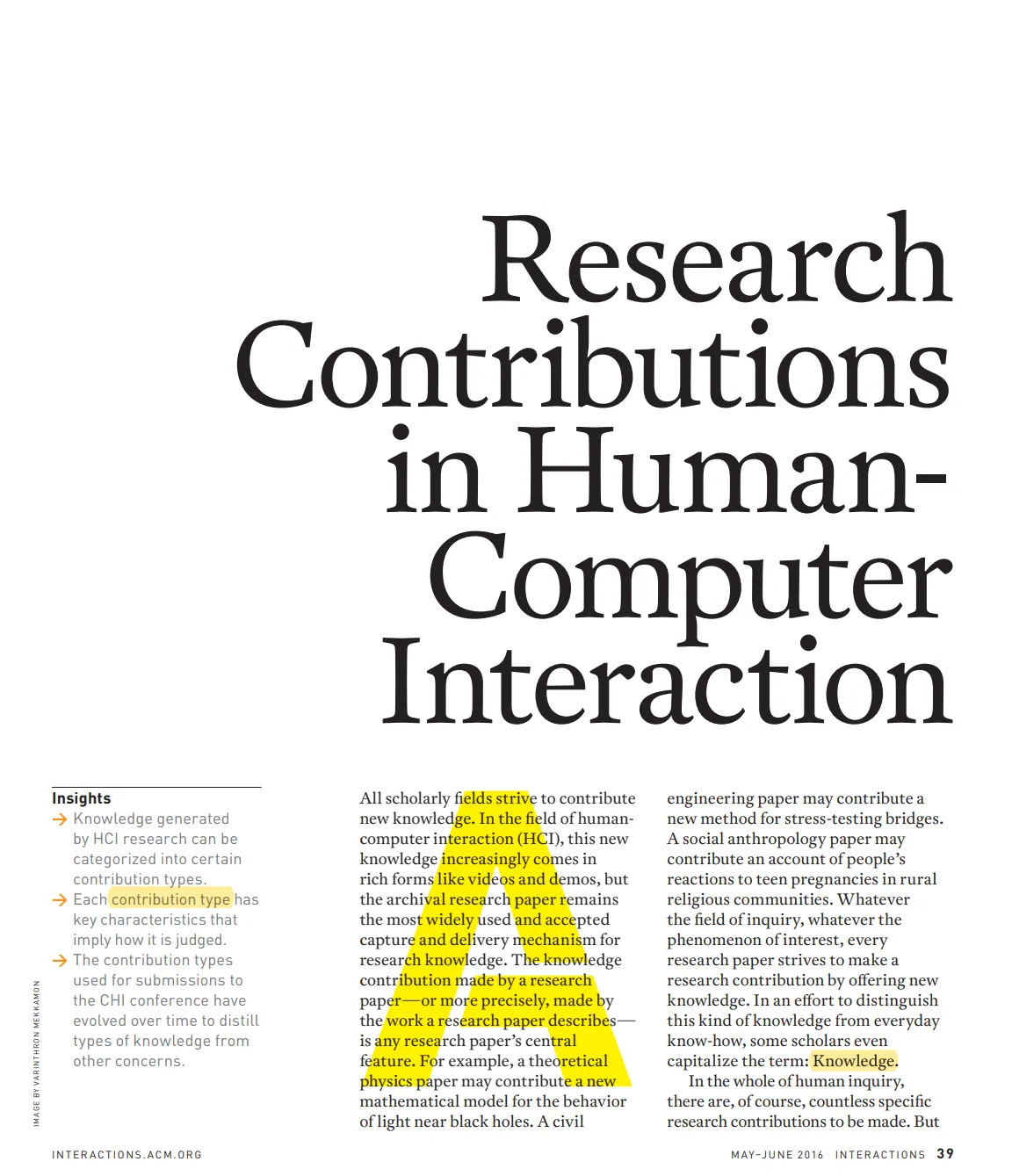In the paper "Seven Contributions of Interaction Techniques to HCI Research and Practice" by Wobbrock, the author discusses the various types of interaction techniques and their contributions to the field of human-computer interaction (HCI).
The author identifies seven contributions that interaction techniques have made to HCI:
1.
Advancing HCI as a scientific discipline by providing a foundation for HCI research.
2.
Providing new interaction styles and paradigms, such as gesture-based interaction, which has expanded the range of possible interaction styles.
3.
Increasing accessibility by providing alternative ways of interacting with technology for individuals with disabilities.
4.
Enabling new interaction modalities, such as touch-based interaction, that have become an integral part of our daily lives.
5.
Fostering cross-disciplinary collaborations between HCI and fields such as psychology, sociology, and engineering.
6.
Contributing to the design of new devices, such as smartphones and tablets, that have changed the way we interact with technology.
7.
Facilitating the development of new applications, such as gaming and virtual reality, which have opened up new avenues for HCI research and practice.
Regarding where to start in the paper, the author provides a comprehensive overview of the various interaction techniques and their contributions to HCI. The author starts by providing an introduction to interaction techniques and their role in shaping the field of HCI. The author then goes on to discuss each of the seven contributions in detail, providing examples and discussing the implications of each contribution for HCI research and practice. The author concludes the paper by summarizing the key points and outlining future directions for HCI research and practice.



